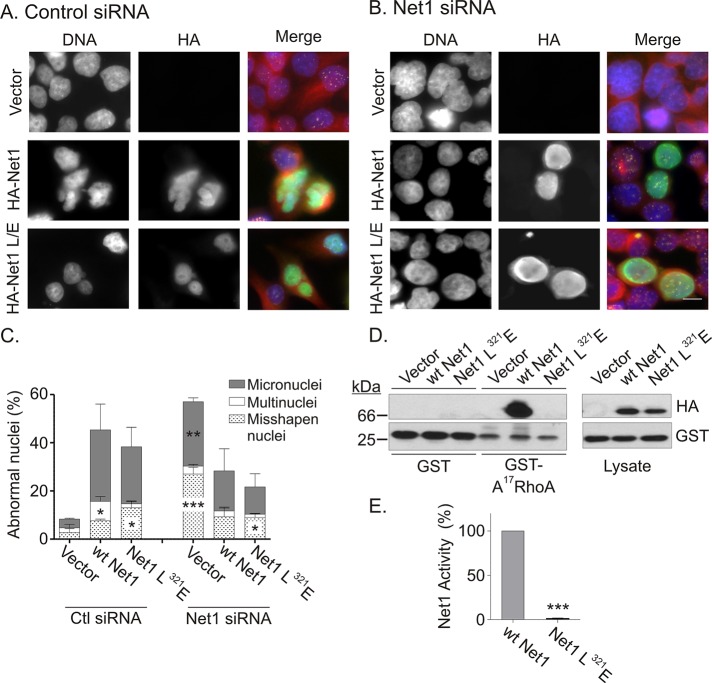FIGURE 7:
Expression of wild-type or catalytically inactive Net1 rescues nuclear morphology in Net1-depleted cells. HeLa cells were transfected with control (A) or Net1-specific (B) siRNAs. One day later the cells were transfected with plasmids expressing siRNA-resistant, HA-epitope-tagged wild-type or catalytically inactive Net1 (L321E). Two days later the cells were fixed and stained for HA-epitope expression (green), α-tubulin (red), CREST (purple), and DNA (blue). Representative micrographs. Bar, 10 μm. (C) Quantification of aberrant nuclear morphology. Average of three independent experiments. Errors are SEM. Statistical significance compared with control values was determined by Student's t test; *p < 0.05; **p < 0.01; ***p < 0.001. (D) Assessment of the activation state of wild-type and catalytically inactive Net1. HeLa cells were transfected with HA-epitope-tagged wild-type Net1 or Net1 L321E. Two days later the cells were lysed and tested for interaction with GST or GST-A17RhoA in pull-down assays. Left, Western blots for HA-Net1 proteins and GST in the glutathione-agarose pull downs. Right, Western blots of HA-Net1 proteins and GAPDH in cell lysates. A representative experiment from three independent experiments. (E) Quantification of Net1 activity assays. Statistical significance was determined by Student's t test; ***p < 0.001.

